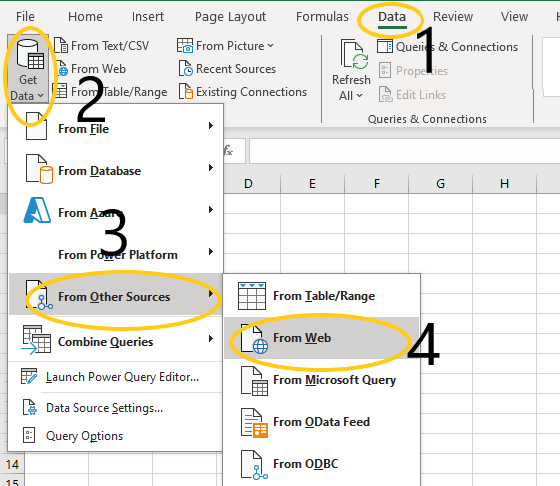CSV (Comma Separated Values) files are a popular way to store and exchange data. They are widely used in various industries, from finance to marketing, and are a crucial part of data analysis and manipulation. As a programmer, knowing how to write CSV files is an essential skill that can save you time and effort in your projects.
In this article, we will explore the art of CSV writing and provide you with tips and tricks to master it. Whether you are a beginner or an experienced programmer, this guide will help you improve your CSV writing skills and make your data handling tasks more efficient.
Why is CSV Writing Important?
CSV files are a simple and efficient way to store and exchange data. They are human-readable, meaning that they can be easily opened and viewed in a text editor. This makes them a popular choice for data storage and transfer, especially when working with large datasets.
CSV files are also widely supported by various programming languages and tools, making them a versatile format for data manipulation. They can be easily imported into spreadsheet software, databases, and other data analysis tools, making them an essential part of data-driven projects.
Efficient Data Manipulation

by Traxer (https://unsplash.com/@traxer)
One of the main advantages of CSV files is their ability to store large amounts of data in a compact format. This makes them ideal for data manipulation tasks, such as sorting, filtering, and searching. With the right tools and techniques, you can easily extract and manipulate data from CSV files, making them a valuable asset in your programming arsenal.
Easy Data Exchange
CSV files are also a popular choice for data exchange between different systems and platforms. They are supported by most programming languages and can be easily imported and exported from various tools and applications. This makes them a convenient format for sharing data with colleagues and collaborators, regardless of their technical background.
Versatile Data Storage
CSV files are a versatile format for data storage. They can store a wide range of data types, including strings, numbers, and dates, making them suitable for various types of data. This flexibility makes them a popular choice for storing data in databases, spreadsheets, and other data storage systems.
Tips for Writing CSV Files
Now that we understand the importance of CSV writing, let’s dive into some tips and best practices to help you master the art of CSV writing.
Use a CSV Library

by Fahrul Azmi (https://unsplash.com/@fahrulazmi)
One of the best ways to write CSV files is by using a CSV library. These libraries provide a set of functions and methods that make it easy to read and write CSV files in your programming language of choice. They also handle common issues such as escaping special characters and formatting data correctly, saving you time and effort.
Some popular CSV libraries include csv for Python, csv for Ruby, and csv for Java. These libraries are well-documented and have a large community of users, making them a reliable choice for your CSV writing needs.
Format Your Data Correctly
When writing CSV files, it is essential to format your data correctly. This includes using the correct data types, such as strings, integers, and dates, and ensuring that your data is properly escaped. Failure to format your data correctly can result in errors and make it difficult to manipulate your data later on.
For example, if you are writing a CSV file with a list of dictionaries in Python, you need to ensure that all the values in your dictionaries are strings. This is because the csv library in Python only accepts strings as input. If you have integers or other data types, you will need to convert them to strings before writing them to the CSV file.
Handle Special Characters

by Turhan Can Kargin (https://unsplash.com/@tkargin)
Special characters, such as commas and quotes, can cause issues when writing CSV files. These characters are used as delimiters and can interfere with the structure of your CSV file if not handled correctly. To avoid this, you need to escape these characters before writing them to your CSV file.
Most CSV libraries have built-in functions to handle special characters, such as csv.writer in Python and CSV.generate in Ruby. These functions will automatically escape special characters, ensuring that your CSV file is properly formatted.
Use Headers
Headers are the first row in a CSV file and contain the names of the columns. They are essential for data analysis and manipulation, as they provide context for the data in your CSV file. When writing CSV files, it is good practice to include headers to make your data more readable and organized.
Most CSV libraries have options to include headers when writing CSV files. For example, in Python, you can use the csv.DictWriter class to write CSV files with headers. This class takes a list of dictionaries as input and automatically uses the keys as headers for your CSV file.
Consider Encoding
Encoding is the process of converting characters into a specific format for storage or transmission. When writing CSV files, it is essential to consider the encoding of your data to ensure that it is readable and compatible with other systems.
UTF-8 is the most commonly used encoding for CSV files, as it supports a wide range of characters and is compatible with most systems. However, if you are working with data in a different encoding, you may need to convert it to UTF-8 before writing it to a CSV file.
Test Your CSV Files

by National Cancer Institute (https://unsplash.com/@nci)
Before using your CSV files in a production environment, it is crucial to test them thoroughly. This includes checking for formatting errors, special characters, and data types. Testing your CSV files can save you time and effort in the long run, as it helps identify and fix any issues before they cause problems in your project.
Most CSV libraries have built-in functions for testing CSV files, such as csv.Sniffer in Python and CSV.parse in Ruby. These functions can help you identify any issues with your CSV file and ensure that it is properly formatted before using it in your project.
Real-World Examples of CSV Writing
Now that we have covered some tips and best practices for CSV writing, let’s look at some real-world examples of using CSV files in programming.
Python: Writing a List of Dictionaries to CSV
In Python, you can use the csv.DictWriter class to write a list of dictionaries to a CSV file. This class takes a list of dictionaries as input and automatically uses the keys as headers for your CSV file. Here’s an example of how to use it:
import csv
List of dictionaries
data = {‘name’: ‘John’, ‘age’: 25, ‘country’: ‘USA’}, {‘name’: ‘Jane’, ‘age’: 30, ‘country’: ‘Canada’}, {‘name’: ‘Bob’, ‘age’: 40, ‘country’: ‘UK’}
Open CSV file for writing
with open(‘data.csv’, ‘w’, newline=”) as csvfile: # Create DictWriter object writer = csv.DictWriter(csvfile, fieldnames=’name’, ‘age’, ‘country’)
# Write headers writer.writeheader()
# Write data writer.writerows(data)
This code will create a CSV file called data.csv with the following contents:
name,age,country John,25,USA Jane,30,Canada Bob,40,UK
Ruby: Writing CSV Files
In Ruby, you can use the CSV library to write CSV files. This library provides a CSV.generate method that takes a block as input and automatically formats your data into a CSV file. Here’s an example of how to use it:
require ‘csv’
List of arrays
data = [ ‘name’, ‘age’, ‘country’, ‘John’, 25, ‘USA’, ‘Jane’, 30, ‘Canada’, ‘Bob’, 40, ‘UK’ ]
Generate CSV file
csv = CSV.generate do |csv| # Write headers csv << data0
# Write data data[1..-1].each do |row| csv << row end
end
Write CSV file to disk
File.write(‘data.csv’, csv)
This code will create a CSV file called data.csv with the following contents:
name,age,country John,25,USA Jane,30,Canada Bob,40,UK
Conclusion
CSV writing is an essential skill for any programmer working with data. By following the tips and best practices outlined in this article, you can improve your CSV writing skills and make your data handling tasks more efficient. Remember to use a CSV library, format your data correctly, handle special characters, and test your CSV files before using them in a production environment. With these techniques, you can master the art of CSV writing and take your data manipulation skills to the next level.







